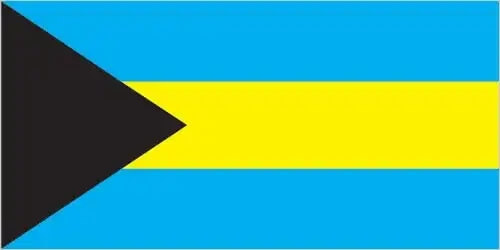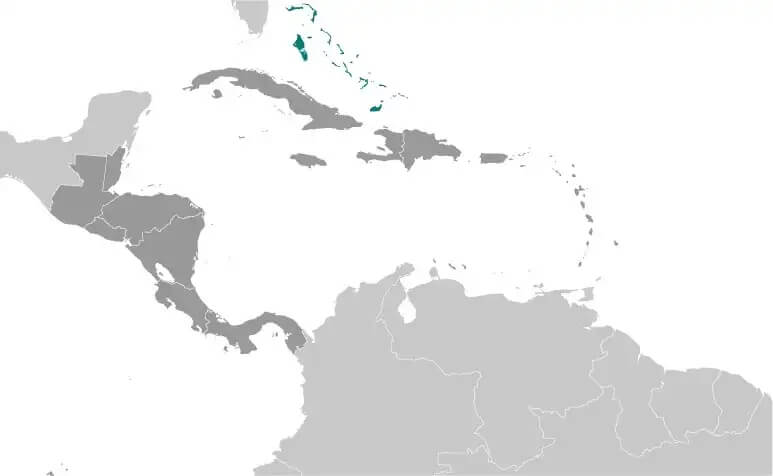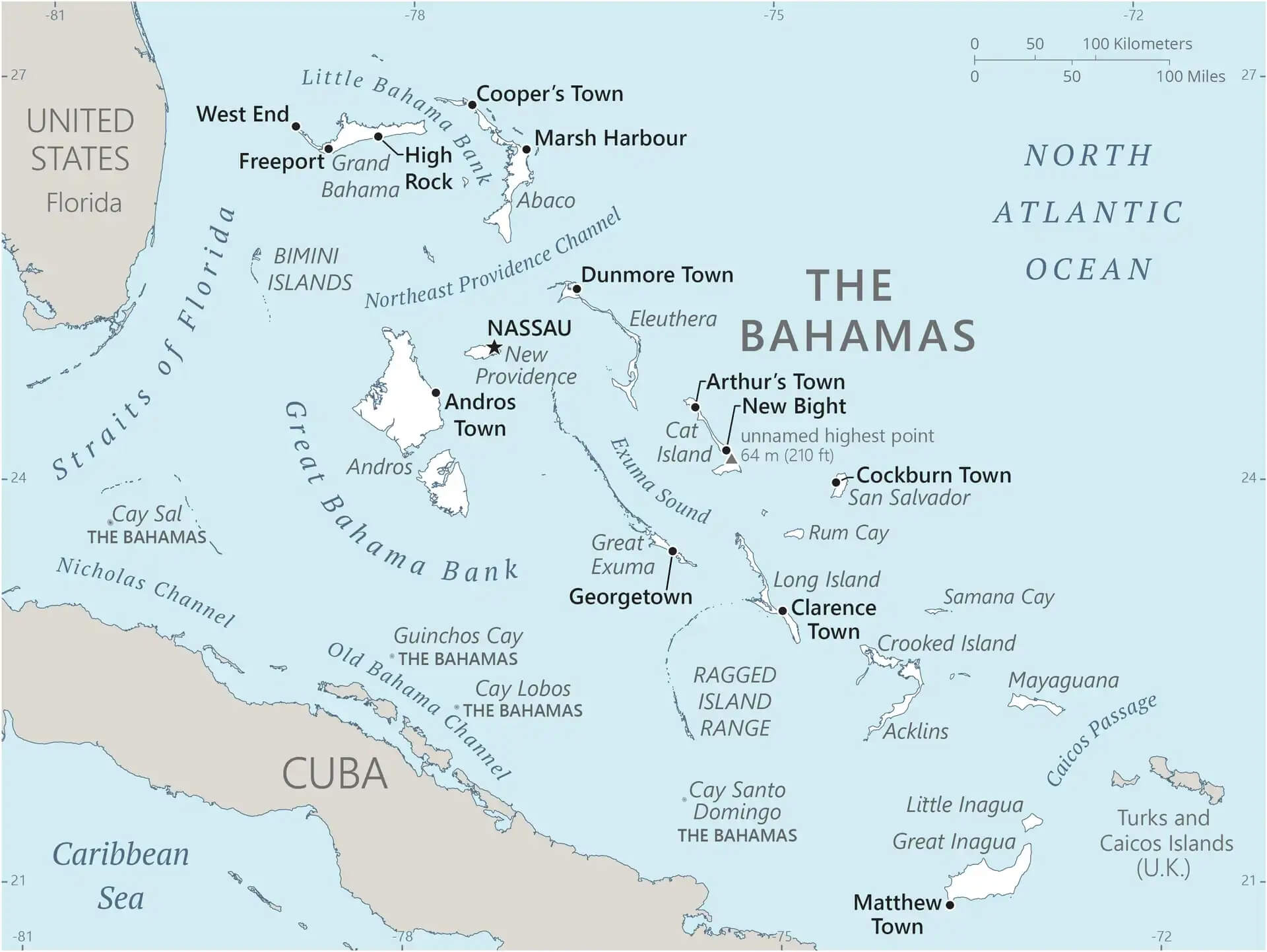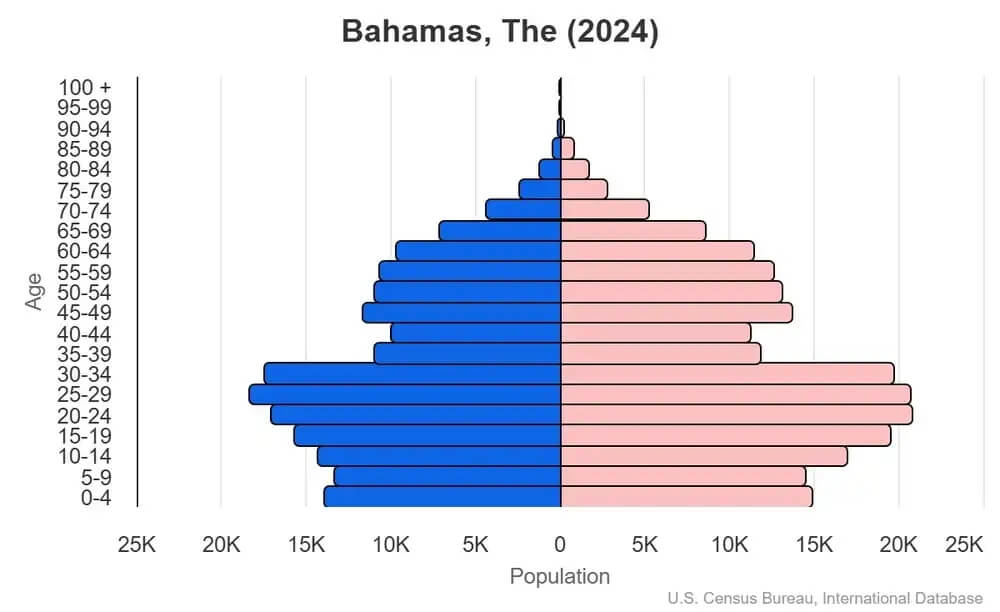World Book
The Bahamas
Introduction
Background
Lucayan Indians inhabited the islands when Christopher COLUMBUS first set foot in the New World in 1492. British settlement of the islands began in 1647, and they became a colony in 1783. Since gaining independence from the UK in 1973, The Bahamas has prospered through tourism, international banking, and investment management.
Geography
Area
total : 13,880 sq km
land: 10,010 sq km
water: 3,870 sq km
Climate
tropical marine; moderated by warm waters of Gulf Stream
Natural resources
salt, aragonite, timber, arable land
People and Society
Population
total: 410,862 (2024 est.)
Ethnic groups
African descent 90.6%, White 4.7%, mixed 2.1%, other 1.9%, unspecified 0.7% (2010 est.)
Languages
English (official), Creole (among Haitian immigrants)
Religions
Protestant 69.9% (includes Baptist 34.9%, Anglican 13.7%, Pentecostal 8.9% Seventh Day Adventist 4.4%, Methodist 3.6%, Church of God 1.9%, Plymouth Brethren 1.6%, other Protestant 0.9%), Roman Catholic 12%, other Christian 13% (includes Jehovah's Witness 1.1%), other 0.6%, none 1.9%, unspecified 2.6% (2010 est.)
Population growth rate
1.07% (2024 est.)
Government
Government type
parliamentary democracy under a constitutional monarchy; a Commonwealth realm
Capital
name: Nassau
Executive branch
chief of state: King CHARLES III (since 8 September 2022); represented by Governor-General Cynthia A. PRATT (since 1 September 2023)
head of government: Prime Minister Philip Edward DAVIS (since 17 September 2021)
Diplomatic representation in the US
chief of mission: Ambassador Wendall Kermith JONES (since 19 April 2022)
Diplomatic representation from the US
chief of mission: Ambassador (vacant); Chargé d’Affaires Kimberly FURNISH (since June 2024)
Economy
Economic overview
high-income tourism and financial services economy; major income inequality; strong US bilateral relations; several tax relief programs; targeted investment in agriculture, energy, light manufacturing, and technology industries
Real GDP (purchasing power parity)
$14.544 billion (2024 est.)
$14.069 billion (2023 est.)
$13.653 billion (2022 est.)
Real GDP per capita
$36,200 (2024 est.)
$35,200 (2023 est.)
$34,300 (2022 est.)
Exports
$6.771 billion (2024 est.)
$6.011 billion (2023 est.)
$5.425 billion (2022 est.)
Exports - partners
USA 36%, Zimbabwe 16%, Cote d'Ivoire 14%, Germany 8%, Guyana 8% (2023)
Exports - commodities
refined petroleum, ships, aluminum, shellfish, plastics (2023)
Imports
$7.069 billion (2024 est.)
$6.273 billion (2023 est.)
$5.843 billion (2022 est.)
Imports - partners
USA 60%, Germany 13%, China 5%, Japan 3%, Brazil 2% (2023)
Imports - commodities
refined petroleum, ships, aircraft, cars, crude petroleum (2023)
Human Development Index
The country's Human Development Index (HDI) is 0.820, ranking it 66th out of 193 countries tested. (more information)



